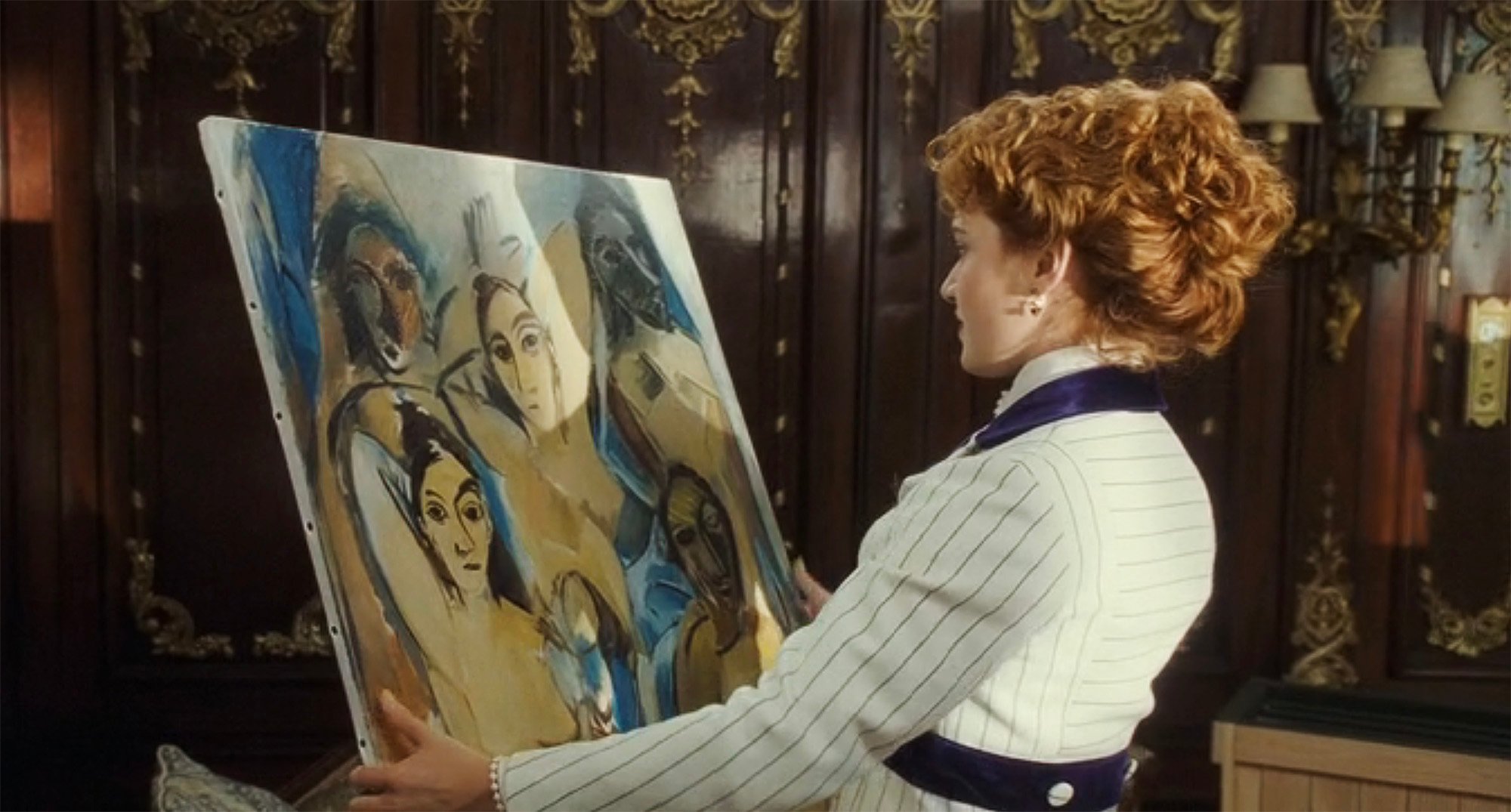
James Cameron’s 1997 hit film Titanic follows the passionate but ill-fated romance of socialite Rose DeWitt Bukater (played by Kate Winslet) and a scrappy artist Jack Dawson (Leonardo DiCaprio), who meet on the disastrous maiden voyage of the eponymous ship.
In a famous but deleted scene towards the beginning of the film, Rose’s maids carry her collection of modern art into the suite. “Who’s the artist?” one of the maids asks. “Something Picasso,” Rose answers. The painting in question is Les Demoiselles d’Avignon (1907), painted five years before the Titanic set sail from Southampton. Also on board are reproductions of L’Étoile (The Star) (1878) by Edgar Degas, and a canvas from Claude Monet’s series of “Water Lilies.”
The paintings help establish the conflict between Rose and her wealthy fiancée Cal, whom she marries in order to maintain her financially troubled family’s place in society’s upper echelons. Cal calls Rose’s art collection a “waste of money” and declares, full of certainty, that this Picasso guy “will not amount to a thing.”
Kate Winslet in Titanic (1997). Photo: Screen grab.
He was, of course, wrong. Even in the early 1900s, Degas, Monet, and Picasso were already major figures in the international art world, their revolutionary styles ushering in a prolonged period of painterly experimentation. Rose is on board with this movement (figuratively), although she does not fully understand the meaning behind what she collects.
“The difference between Cal’s taste in art and mine is that I have some,” she snaps back. Momentarily losing herself in Les Demoiselles d’Avignon, she says the image makes her feel as though she is “inside a dream. There’s truth but no logic.”
Just as Rose’s artistic inclinations keep her estranged from Cal, they draw her to Jack. A man of the streets, Jack is not of the same socioeconomic class as Rose, but they share an evident interest in art. A competent draftsman himself, Jack later agrees to draw Rose as one of his “French girls.”
Picasso’s role in Titanic, however, was wholly unsanctioned by his estate. Cameron had sought permission to use Les Demoiselles in the film, but was refused “because the painting has been on display at the Museum of Modern Art for well over 60 years and certainly did not go down with the ship when the Titanic sank,” according to Theodore Feder of the Artists Rights Society (ARS), which oversees the copyrights of Picasso’s works. The filmmaker used a replica of the work in the film anyway, leading ARS to seek a settlement after the fact.
Pablo Picasso’s Les Demoiselles d’Avignon (1907) on display at MoMA in New York. Photo: Stan Honda/AFP via Getty Images.
The same issue would flare up again with the 2012 re-release of Titanic as a 3D film, which the estate argued was a distinct, new work. Cameron was required to pay a licensing fee to use Les Demoiselles in the scene in Rose’s stateroom, but towards the end of the movie, replaced a shot of the painting sinking underwater with that of Degas’s L’Étoile, which is in the public domain.
But like the Picasso canvas, L’Étoile did not go down into the depths of the Atlantic Ocean. It is safe and sound at the Musée d’Orsay in Paris, just as Monet’s many depictions of water lilies can be found hanging in institutions from New York’s Metropolitan Museum of Art to London’s National Gallery.
Edgar Degas, L’Étoile (1878). Photo: Fine Art Images/Heritage Images/Getty Images.
Unfortunately, other valuable paintings were brought on the ship. One of these was Merry-Joseph Blondel’s La Circassienne au Bain (1814), then property of Swedish businessman Maurtiz Hakan Björnström-Steffansson. A first-class passenger, the Swede survived the sinking and went on to sue the cruise company for more than $2 million in damages.
As Seen On explores the paintings and sculptures that have made it to the big and small screens—from a Bond villain’s heisted canvas to the Sopranos’ taste for Renaissance artworks. More than just set decor, these visual works play pivotal roles in on-screen narratives, when not stealing the show.